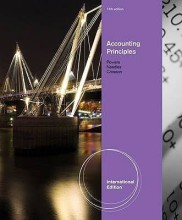Summary: Management Accounting 2
- This + 400k other summaries
- A unique study and practice tool
- Never study anything twice again
- Get the grades you hope for
- 100% sure, 100% understanding
Read the summary and the most important questions on Management Accounting 2
-
Hfd 11 - Activity-based costing
This is a preview. There are 13 more flashcards available for chapter 31/03/2017
Show more cards here -
Refined costing system
This system reduces the use of broad averages for assigning cost of resources to cost objects, and provides a better measurement of the cost of indirect resources used by different cost objects - no matter how differently the different cost objects use indirect resources. -
4 Principal reasons to use refined costing systems
1. Increase in product diversity
2. Increase in indirect costs
3. Advances in information technology
4. Competition in product markets -
Activity-based costing systems (ABC)
A refined costing system that focuses on individual activities as the fundamental cost objects. It seeks a greater level of detail in understanding how an organization uses its resources. -
Activity-based costing system features
1. ABC systems create smaller cost pools linked to different activities
2. For each activity-cost pool, a measure of the activity performed serves as the cost-allocation base
3. Sometimes costs in a cost pool can be traced directly to products. -
Product / Service sustaining costs
Resources sacrificed on activities undertaken to support individual products or services.
(Design costs fall under this level) -
Facility sustaining costs
Resources sacrificed on activities that cannot be traced to individual products or services, but which support the organization as a whole. It's difficult to find a good cause-and-effect relationship between such costs and the cost allocation base. Examples of general administration costs are rent and building security -
2 Key features of ABC systems
1. All costs used by products are identified, whether the cost are variable or fixed in the short run. Because the focus of ABC systems is on longer-run decisions when more of the costs can be managed and fewer costs are regarded as fixed and given.
2. The hierarchy of costs are recognized when allocating costs to products. Based on cost hierarchy total costs are calculated first. Per-unit cost are derived after this. -
Tell-tale signs indicating implementing an ABC systems could be a solution
1. Significant amounts of indirect costs are allocated using only 1 or 2 cost pools
2. All or most indirect costs are identified as output-unit-level costs
3. Products make diverse demands on resources because differences in volume, process steps, batch size or complexity.
4. (Simple) products (easy to produce) show small or negative profits , whereas (complex) products (not easy to produce) show large profits
5. Operations staff have significant disagreement with the accounting staff about the costs of manufacturing, marketing products and services. -
Advantage using a ABC system
* ABC information is used for pricing, product mix, and cost management decisions.
* Management has greater confidence in the activity and product cost numbers -
Activity-based management (ABM)
Management decisions that use activity-based costing information to satisfy customers and manage profitability. These management decisions relate to pricing, product-mix, cost reduction, process improvement, and product design decisions.
- Higher grades + faster learning
- Never study anything twice
- 100% sure, 100% understanding
Topics related to Summary: Management Accounting 2
-
Pricing, target costing and Customer profitability analysis
-
Motivation, budgets and responsibility accounting
-
Flexible budgets, variances and Mgt. control
-
Measuring yield, mix and quantity effects
-
Control systems and transfer pricing
-
Control systems and performance measurement
-
Quality and throughput concerns in managing costs
-
Accounting for just-in-time systems

































